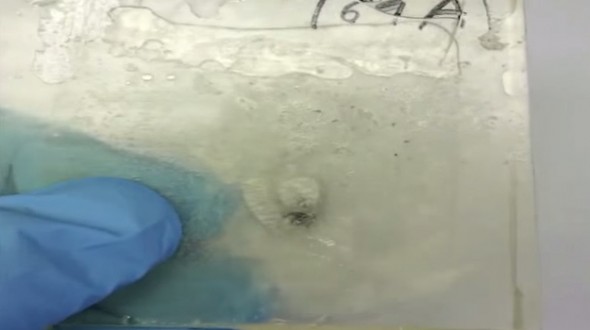
It’s ironic that in the infinite, mostly emptiness of space, one of the most dangerous threats is colliding with foreign bodies. Like a rite of passage, the threat exists almost entirely within the confines of the low Earth orbit through which spacecraft must first pass before breaking into zero gravity. In this minute expanse, debris from cast aside satellites and rockets floats like some sort of obstacle course ready compromise the entire mission if a single, tiny piece punctures the hull of passing-by spacecraft. In an effort to resolve this issue, NASA is developing a new material that’s able to patch itself up within a few seconds “Terminator 2” style.
The effects aren’t as nearly as dramatic, but when the outer polymer casing housing the thiol-ene-trialkylborane liquid resin is punctured, the gel expands to fill in the space and hardens. Developed by researchers from the University of Michigan in collaboration with NASA, the material substance can patch holes in spacecraft as well as airplanes here on Earth, creating a temporary solution before technicians apply something more permanent.
The video below was posted as a proof-of-concept to demonstrate how quickly the gel responds once the polymer is pierced; all it took was a single second.
According to Timothy Scott from the University of Michigan, the material wouldn’t be used to fill out the space in the entirety of the hull, but would serve as an intermediary material between the cabin and the outside body of the moving craft. The combination of material, polymer, and gel is incredibly thin and light-weight, with the current prototype panels measuring only one millimeter in thickness, but if needed, the thinness can be reduced to tens to hundreds of microns.
Take note, that the “self-healing” solution is not meant as an end all solutions, but merely as a backup plan to protect the crew of the ISS and future spacecraft if the existing solutions fail. Currently, the ISS uses “bumpers” to vaporize space debris that comes into contact with them.
Source: ExtremeTech via Eurakalert
Advertisement
Learn more about Electronic Products Magazine





